Cleaning cast iron cookware after cooking bacon requires special attention to remove grease and maintain the seasoning of the pan. Bacon leaves behind a layer of grease and residue that, if not properly cleaned, can lead to a sticky and rancid buildup on the surface of the cast iron.
However, with the right techniques and a bit of care, cleaning cast iron after cooking bacon can be simple and effective.
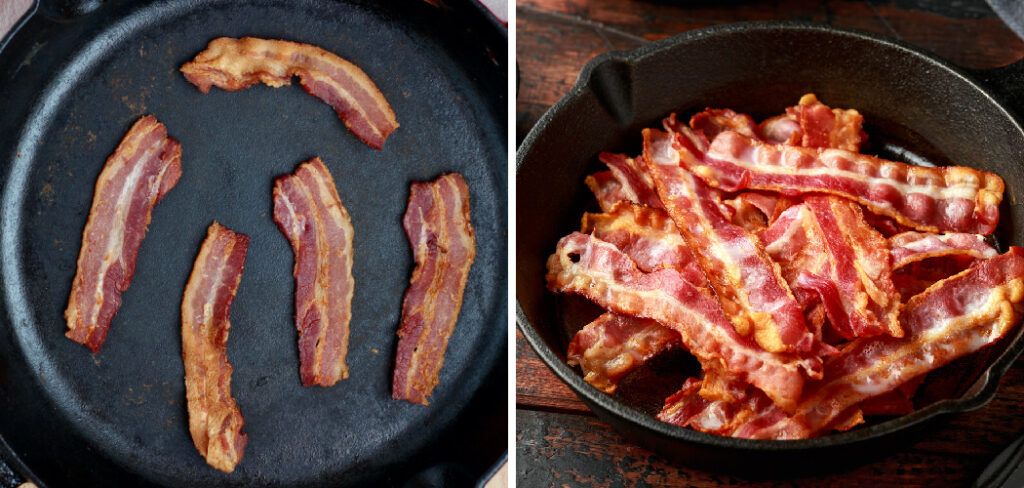
In this article, we’ll explore several methods for how to clean cast iron after cooking bacon, from using hot water and a stiff brush to employing natural cleaning agents like vinegar or baking soda. With these tips, you’ll be able to keep your cast iron pan in excellent condition and ready for the next sizzling batch of bacon.
The Deliciousness of Cooking Bacon in Cast Iron
Cooking bacon in a cast iron skillet is not just a culinary task; it’s an experience that taps into the essence of traditional cooking. The cast iron provides an unbeatable even heat distribution, allowing each strip of bacon to achieve the perfect level of crispiness without burning.
Unlike other cookware, the seasoned surface of a cast iron skillet adds a unique depth of flavor to the bacon, enriching its natural taste and creating an irresistible aroma that fills the kitchen. This method of cooking bacon also benefits the cast iron itself, as the fats render out of the bacon, contributing to the pan’s seasoning layer.
This mutual enhancement between bacon and cast iron makes the process not merely about cooking but about enriching the culinary experience through the flavors and textures that emerge.
Importance of Proper Cleaning
Ensuring proper cleaning of your cast iron skillet, especially after cooking bacon, is crucial for several reasons. First, it helps in maintaining the pan’s seasoning, a protective layer that builds up over time through the oils and fats cooked in it. This layer not only imparts a unique flavor to everything you cook but also creates a non-stick surface.
Improper cleaning can strip this seasoning off, leading to food sticking and rust development. Furthermore, bacon grease, if left to sit, can become rancid, creating an unpleasant odor and potentially affecting the taste of future meals.
Regular and thorough cleaning prevents the buildup of old grease and food particles, ensuring your cast iron remains a cherished tool in your kitchen arsenal. Keeping your cast iron clean and well-maintained extends its lifespan, making it a reliable heirloom to be passed down through generations.
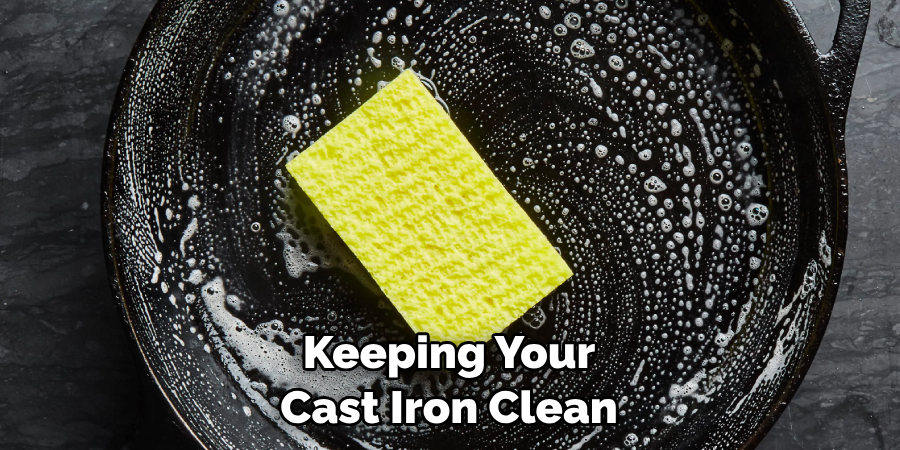
Benefits of Cooking Bacon in Cast Iron
Cooking bacon in a cast iron skillet offers a plethora of benefits that elevate the culinary experience to new heights.
Firstly, the cast iron skillet’s superior heat retention and even heat distribution ensure that bacon cooks evenly, achieving a perfect texture that is crispy on the outside yet tender on the inside. Secondly, the process of cooking bacon in cast iron contributes to the seasoning of the pan.
Each time bacon is cooked, the fats and oils rendered help to build and maintain the skillet’s natural, non-stick surface, enhancing the flavor of the bacon and other foods cooked in the pan thereafter.
Additionally, using cast iron for cooking bacon is a healthier option as it reduces the need for extra oil or fats, allowing the bacon’s natural fats to cook it perfectly.
Lastly, the durability of cast iron means that with proper care, your skillet can last a lifetime, becoming a staple in your kitchen for consistently delicious meals. Cooking bacon in a cast iron skillet is not only an act of cooking but an investment in enhancing the flavors of your meals and the quality of your cookware over time.
Why Cast Iron Is the Perfect Choice for Cooking Bacon
Cast iron’s excellence in cooking bacon isn’t coincidental; it’s rooted in its unique qualities that align perfectly with the needs of frying bacon to perfection. The skillet’s remarkable heat retention means that once it heats up, it stays hot, providing a consistent temperature that is key for cooking bacon evenly without the need for constant adjustment.
This even heat ensures that every strip of bacon comes out with that desirable crispy texture while avoiding undercooked or overly burnt sections.
Furthermore, the hefty build of cast iron skillets makes them virtually indestructible, capable of withstanding high temperatures without warping or suffering damage, making them ideal for the high heat needed for crisping bacon perfectly.
Additionally, the natural non-stick surface of a well-seasoned cast iron skillet means that bacon can be easily turned and removed without sticking, minimizing breakage and allowing for a perfect presentation.
Every use of the skillet for cooking bacon further contributes to the seasoning of the surface, enhancing its non-stick properties and adding layers of flavor that can only be achieved over time.
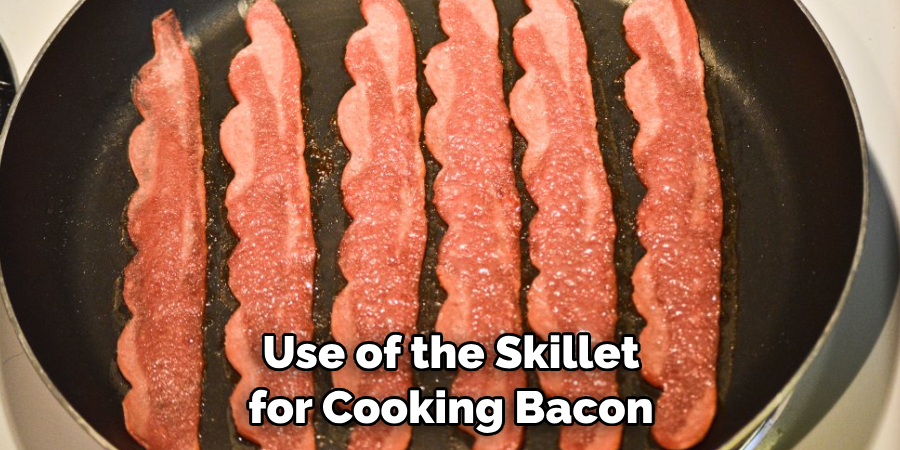
This symbiotic relationship between cast iron and bacon not only facilitates easier cooking but also enriches the culinary experience with each meal prepared. Cast iron, therefore, stands out as the perfect choice for cooking bacon, embodying durability, efficiency, and a capacity to elevate the flavor of bacon like no other cookware can.
Advantages of Using Cast Iron for Even Cooking
Cast iron cookware excels in even cooking, a critical aspect that professional chefs and home cooks alike seek for consistent culinary results. One of the key advantages of using cast iron is its unparalleled ability to retain and distribute heat evenly across its surface.
This means that whether you’re searing a steak, sautéing vegetables, or baking a skillet cornbread, each part of the food receives the same amount of heat, leading to uniformly cooked dishes without hot spots that cause uneven cooking.
Beyond its heat distribution properties, cast iron’s heat retention ensures that it remains hot for an extended period, making it ideal for recipes that require a sustained temperature. This feature is particularly beneficial when serving food directly in the skillet at gatherings, keeping meals warmer for longer compared to other materials.
Another significant advantage is its versatility and suitability for various cooking methods, including stove-top frying, oven-baking, and even outdoor grilling. This adaptability not only simplifies the cooking process but also enhances the flavor and texture of the food, embodying the epitome of efficient and even cooking with every use.
Gathering Necessary Cleaning Supplies and Equipment
Before the cleaning process begins, it’s essential to gather all necessary supplies and equipment to effectively clean your cast iron skillet, particularly after cooking bacon. This preparation ensures that the cleaning process is smooth and efficient, preserving the skillet’s seasoning and integrity.
Start with a stiff brush or a non-metal scrubber, which is effective at removing food particles without damaging the skillet’s surface. You’ll also need coarse kosher salt, which acts as a natural abrasive to help scrub away stubborn residue.
Having mild dish soap on hand is helpful for occasional deeper cleans, although it’s generally recommended to use soap sparingly to protect the skillet’s seasoning. Warm water is crucial for rinsing, while a clean, dry cloth or paper towels are necessary for drying the skillet immediately after washing to prevent rust.
Lastly, keep some cooking oil nearby to re-season the skillet after cleaning. This collection of cleaning supplies and equipment will ensure your cast iron skillet remains in perfect condition, ready for your next culinary adventure.

10 Methods How to Clean Cast Iron after Cooking Bacon
1. Hot Water and Stiff Brush:
Immediately after cooking bacon, rinse the cast iron pan with hot water while it’s still warm. Use a stiff-bristled brush or scrubber to gently scrub away any stuck-on bits of bacon or grease. Avoid using soap, as it can strip away the seasoning of the cast iron. Rinse the pan thoroughly with hot water and dry it completely with a clean towel.
2. Boiling Water:
For stubborn residue, fill the cast iron pan with water and bring it to a boil on the stovetop. Allow the water to boil for a few minutes to loosen the stuck-on bits of bacon and grease. Then, carefully pour out the hot water and use a stiff brush to scrub the pan clean. Rinse the pan with hot water and dry it thoroughly to prevent rusting.
3. Vinegar Soak:
If the cast iron pan has stubborn residue or a lingering odor from cooking bacon, soak it in a solution of equal parts water and white vinegar. Place the pan in the solution and let it soak for 10-15 minutes to loosen the residue. After soaking, scrub the pan with a stiff brush to remove any remaining grease or residue. Rinse the pan with hot water and dry it completely.
4. Baking Soda Paste:
Create a paste by mixing baking soda with a small amount of water to form a thick consistency. Apply the paste to any stubborn stains or residue on the cast iron pan and let it sit for 10-15 minutes. Then, use a stiff brush to scrub the pan clean, focusing on areas with stubborn buildup. Rinse the pan with hot water and dry it thoroughly.
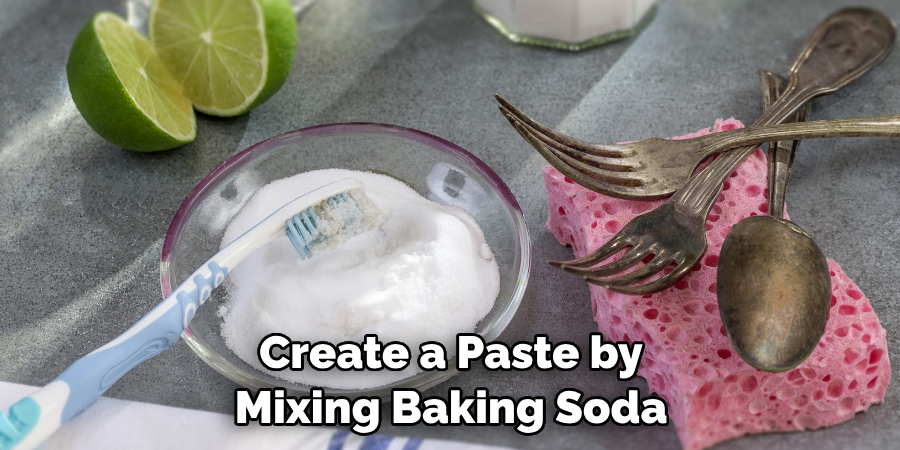
5. Salt Scrub:
Another natural abrasive cleaner for cast iron is salt. Sprinkle a generous amount of coarse salt onto the surface of the pan and use a paper towel or cloth to scrub the pan clean. The abrasive texture of the salt will help lift away any stuck-on bits of bacon or grease. Once clean, rinse the pan with hot water and dry it completely.
6. Potato Scrub:
Cut a potato in half and dip the cut side into coarse salt or baking soda. Use the potato as a scrubber to clean the surface of the cast iron pan. The combination of the potato’s natural juices and the abrasive salt or baking soda will help remove stubborn residue without damaging the seasoning of the pan. Rinse the pan with hot water and dry it thoroughly.
7. Oil and Salt Scrub:
After cleaning the cast iron pan, sprinkle a small amount of coarse salt onto the surface. Add a few drops of cooking oil, such as vegetable or olive oil, and use a paper towel or cloth to scrub the pan clean. The oil helps to lubricate the surface while the salt acts as an abrasive to remove any remaining residue. Rinse the pan with hot water and dry it completely.
8. Boil Potato Peels:
Boil potato peels in the cast iron pan to help remove stubborn residue and odors from cooking bacon. The natural starches in the potato peels will help loosen stuck-on bits of bacon and absorb any lingering odors. After boiling, discard the potato peels and use a stiff brush to scrub the pan clean. Rinse the pan with hot water and dry it thoroughly.
9. Onion Scrub:
Cut an onion in half and use the cut side to scrub the surface of the cast iron pan. The natural acidity and abrasive texture of the onion will help remove grease and residue from cooking bacon. After scrubbing, rinse the pan with hot water and dry it completely to prevent rusting.
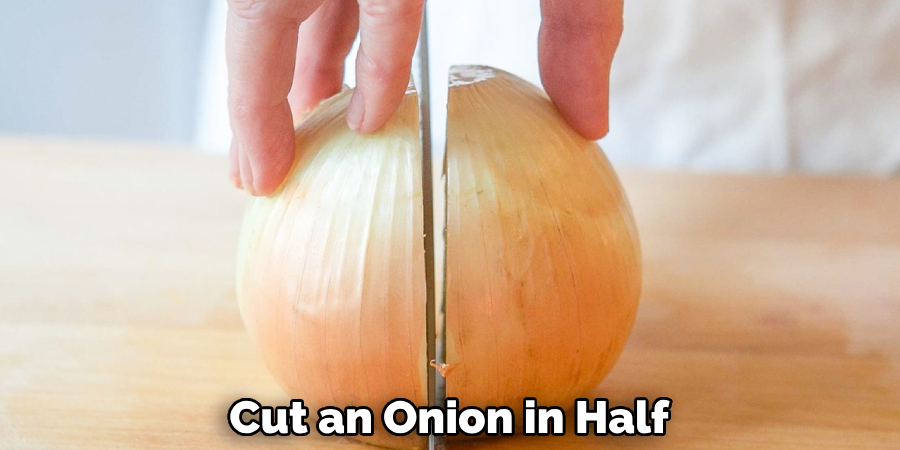
10. Re-season the Pan:
After cleaning the cast iron pan, it’s essential to re-season it to maintain its non-stick properties and prevent rusting. Apply a thin layer of cooking oil, such as vegetable or flaxseed oil, to the entire surface of the pan, including the handle and exterior.
Place the pan upside down in a preheated oven at 375°F (190°C) for 1-2 hours to allow the oil to polymerize and form a protective layer. Let the pan cool completely before storing it to prevent moisture buildup.
Seasoning Cast Iron After Cleaning
Seasoning your cast iron skillet after cleaning is a crucial step to maintain its effectiveness and longevity. This process involves coating the skillet with a thin layer of oil and heating it to create a polymerized oil layer, which acts as a natural, non-stick surface.
To season your skillet, start by preheating your oven to 375°F (190°C). While the oven heats, apply a thin, even layer of high-smoke-point oil, such as canola, vegetable, or flaxseed oil, to the entire surface of the pan, including the exterior and bottom.
It’s important to use just enough oil to coat the skillet lightly, avoiding any excess that could lead to a sticky residue. After applying the oil, place the skillet upside down in the preheated oven, placing a sheet of aluminum foil or an oven tray below it to catch any drips.
Bake for 1-2 hours, allowing the oil to polymerize and form a hard, protective layer. Once done, turn off the oven and allow the skillet to cool completely inside the oven.
This newly seasoned surface not only enhances the non-stick properties of the skillet but also protects it from rust and corrosion, ensuring your cast iron remains a cherished tool in your kitchen for years to come.
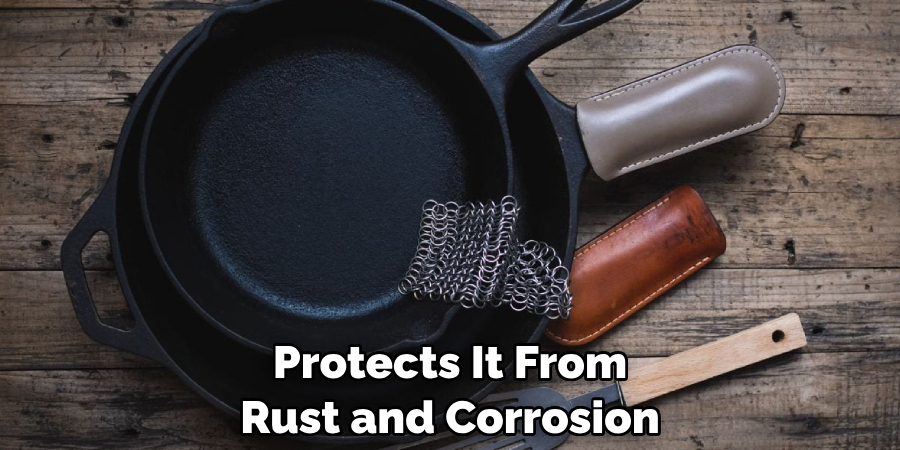
Tips and Tricks for Cleaning Cast Iron After Cooking Bacon
When it comes to maintaining your cast iron skillet post-bacon cooking, a few additional tips and tricks can further ensure the longevity and performance of your pan:
- Immediate Cleaning: While it might be tempting to leave cleaning until later, addressing the grease and residue immediately after cooking bacon can prevent the buildup from becoming harder to remove. This immediate action keeps your skillet in optimal condition.
- Minimal Water Use: Although water is necessary for cleaning, minimizing its use and ensuring the skillet is thoroughly dried immediately after can prevent rust formation. Cast iron is prone to rusting if left wet, so always dry the skillet completely after washing and before storing.
- Preheat Before Cleaning: If you find residue is stubborn, gently heating the skillet on the stove before cleaning can help loosen the grease, making it easier to scrub away with a brush or scraper.
- Grease Disposal: Instead of washing bacon grease down the drain, where it can solidify and cause blockages, pour it into a disposable container and discard it in the trash. This step helps maintain both your skillet and plumbing.
- Use of a Chainmail Scrubber: For those who regularly cook bacon in cast iron, investing in a chainmail scrubber can be a wise choice. These scrubbers are incredibly effective at removing stuck-on bits without damaging the seasoning of your skillet.
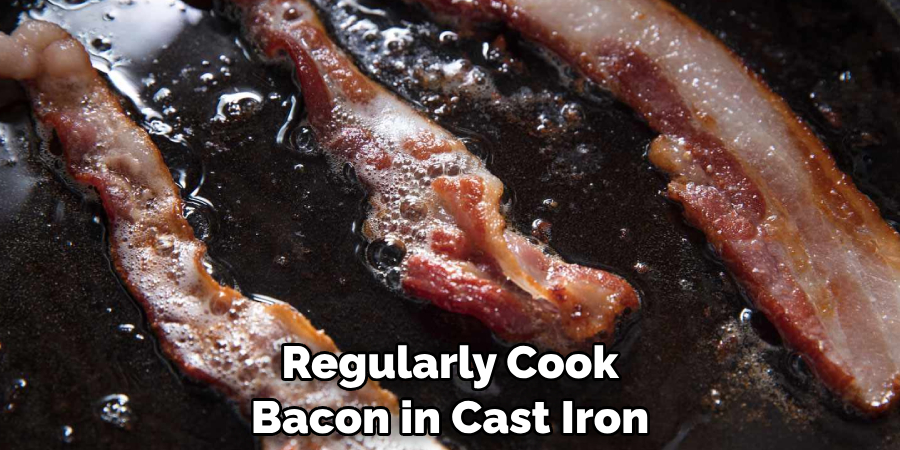
Conclusion
In conclusion, mastering the art of cleaning cast iron after cooking bacon ensures that this beloved kitchen essential remains in top condition for many sizzling sessions to come.
By following the step-by-step guide and tips outlined in this article, individuals can effectively remove excess grease and residue from their cast iron cookware without compromising its prized seasoning.
Proper cleaning techniques, such as using hot water and a stiff brush, coupled with gentle abrasives like kosher salt, help maintain the integrity of the cast iron surface while preserving its flavor-enhancing properties. Thanks for reading, and we hope this has given you some inspiration on how to clean cast iron after cooking bacon!
Professional Focus
Angela Ervin, a former interior designer turned blogger, specializes in kitchen design and renovations. Through her website, she blends her passion for cooking with design expertise, sharing practical and creative ideas. Known for balancing functionality and beauty, Angela’s insightful content has made her a trusted voice in home design and lifestyle.
About the Author
Angela Ervin, an experienced interior designer and blogger, combines her passion for kitchen renovations with storytelling. Living in Petersburg with her family, she enjoys cooking and testing her projects firsthand. Known for her humor and relatable style, Angela shares creative, functional design insights through her content, making her a trusted voice in home design.
Education History
University: Virginia Commonwealth University
Degree: Bachelor of Fine Arts (BFA) in Interior Design
- Angela’s education at VCU focused on mastering core interior design principles, including spatial planning, color theory, materials selection, and sustainable design practices.
- She gained hands-on experience through studio projects and collaborative design exercises, which honed her ability to create functional and aesthetically pleasing environments.
- Her coursework also emphasized problem-solving and practical applications of design, preparing her for real-world projects like her self-directed kitchen renovations.
- The program’s strong foundation in both technical skills and creative expression shaped Angela’s ability to seamlessly integrate form and function in her work.


